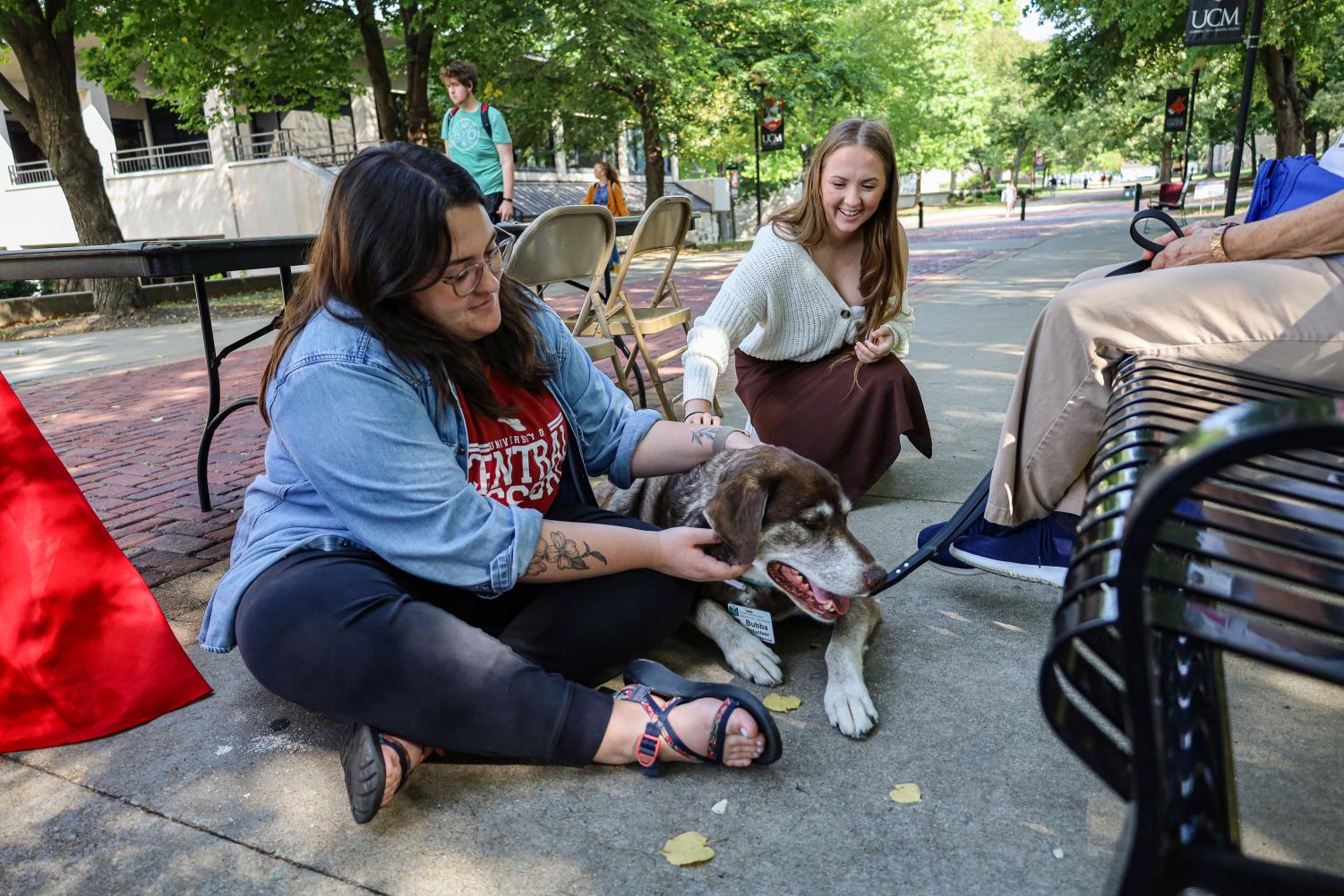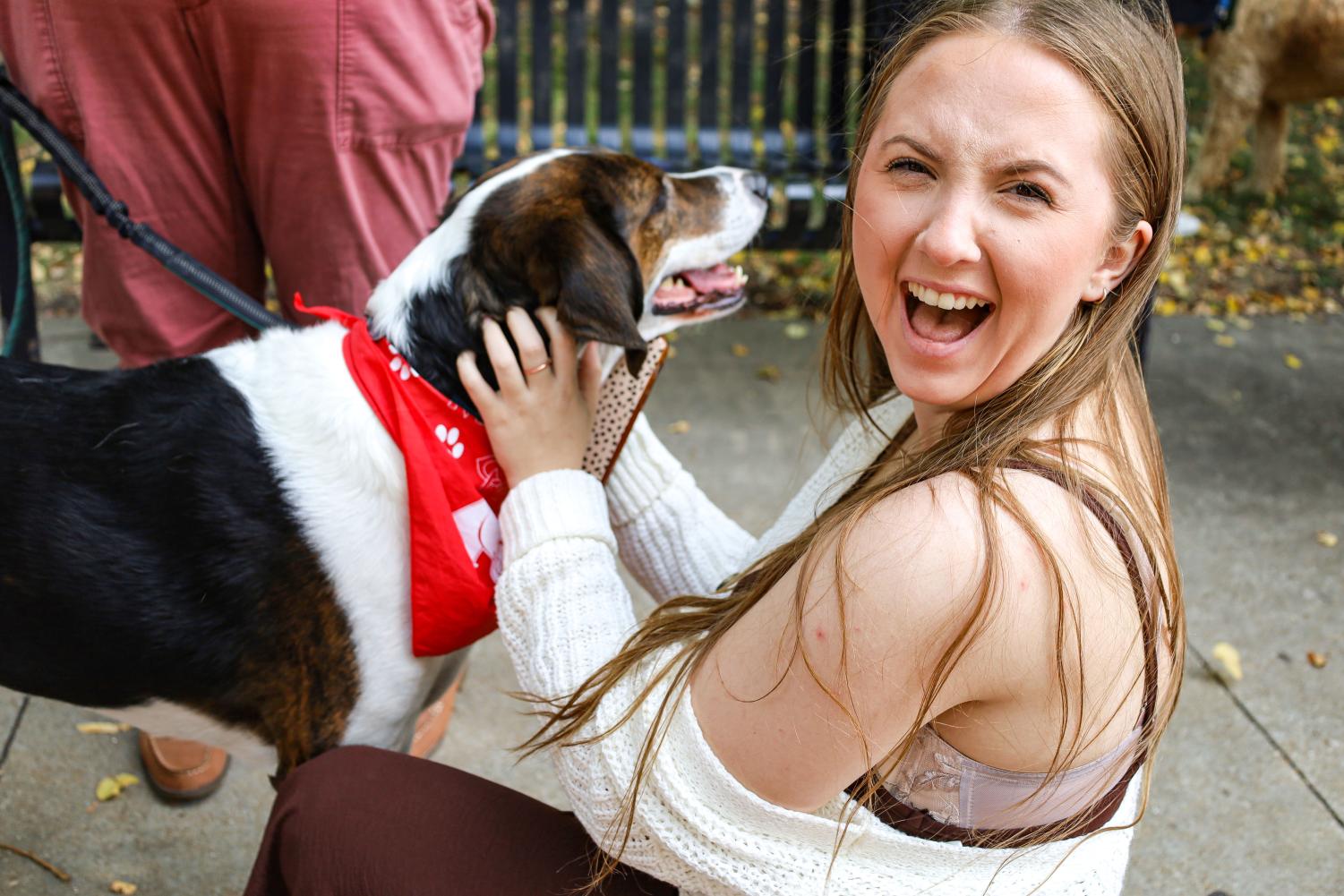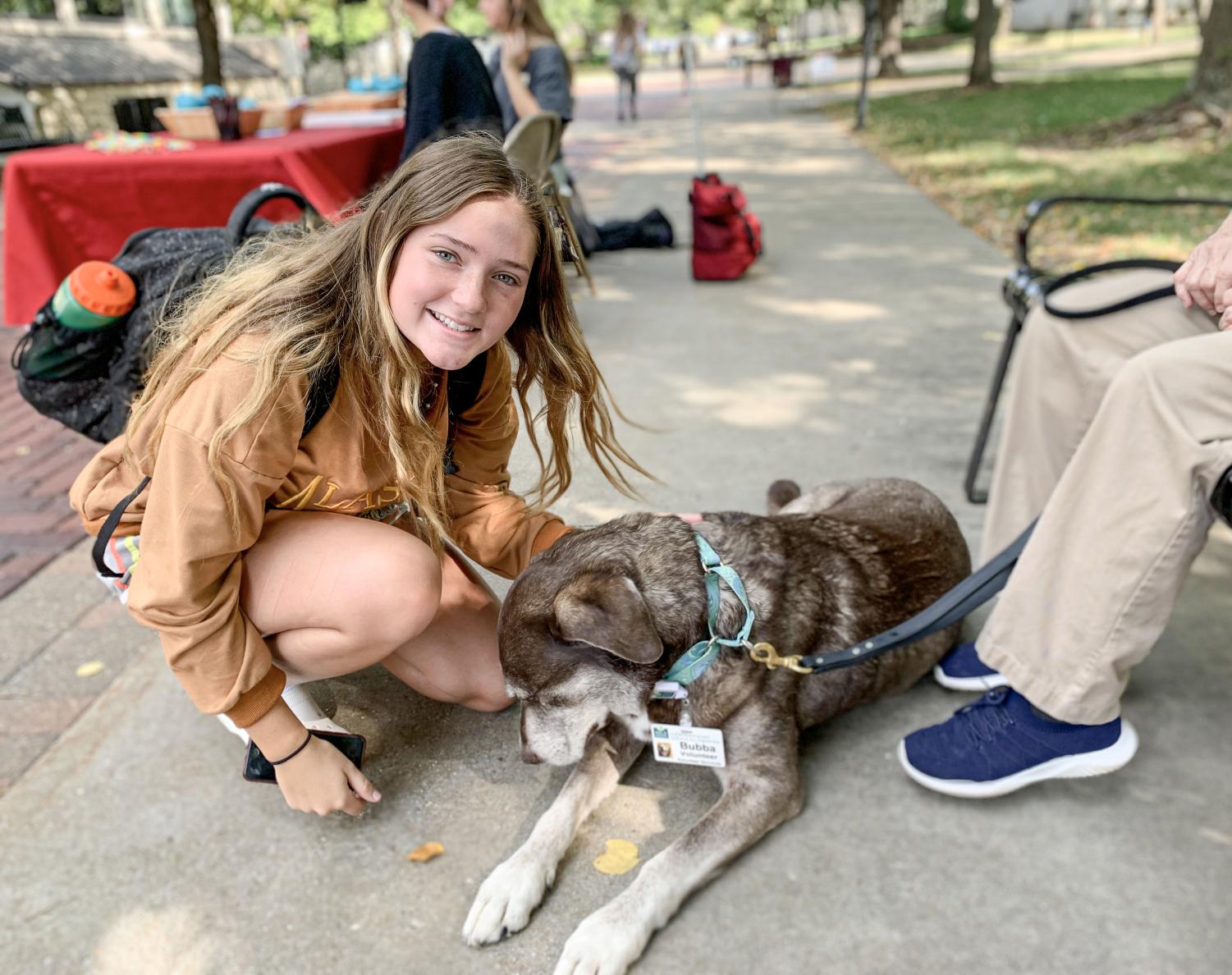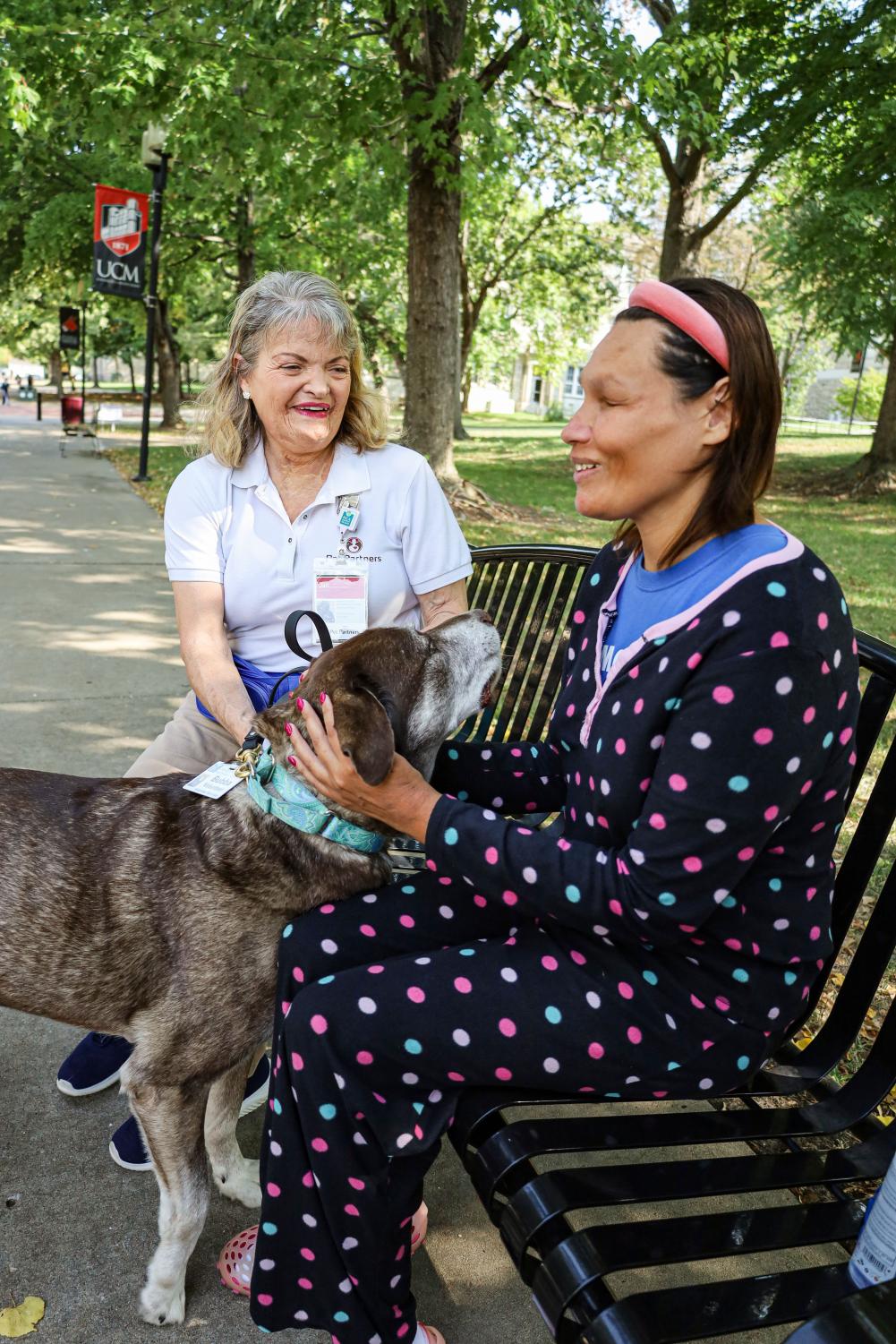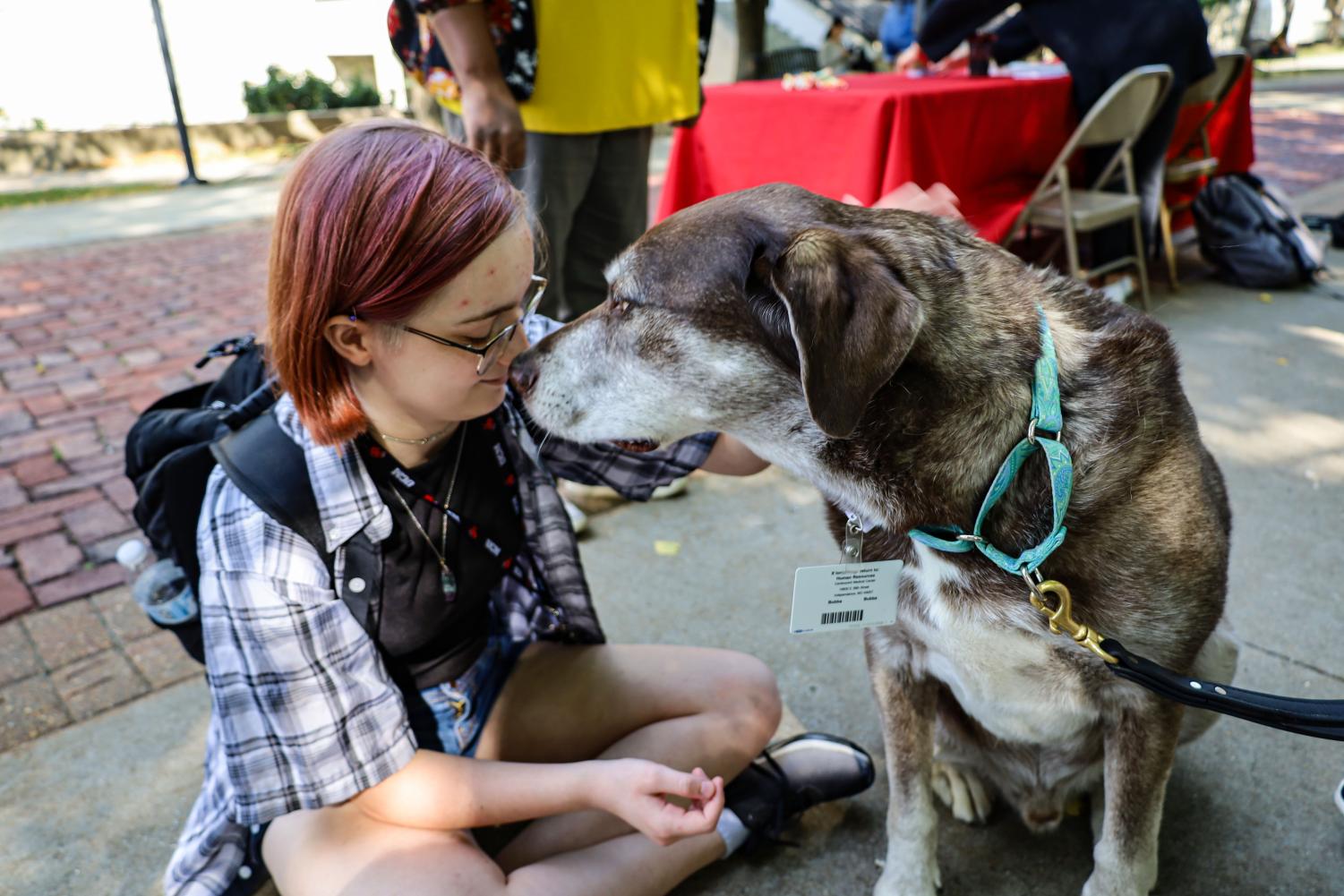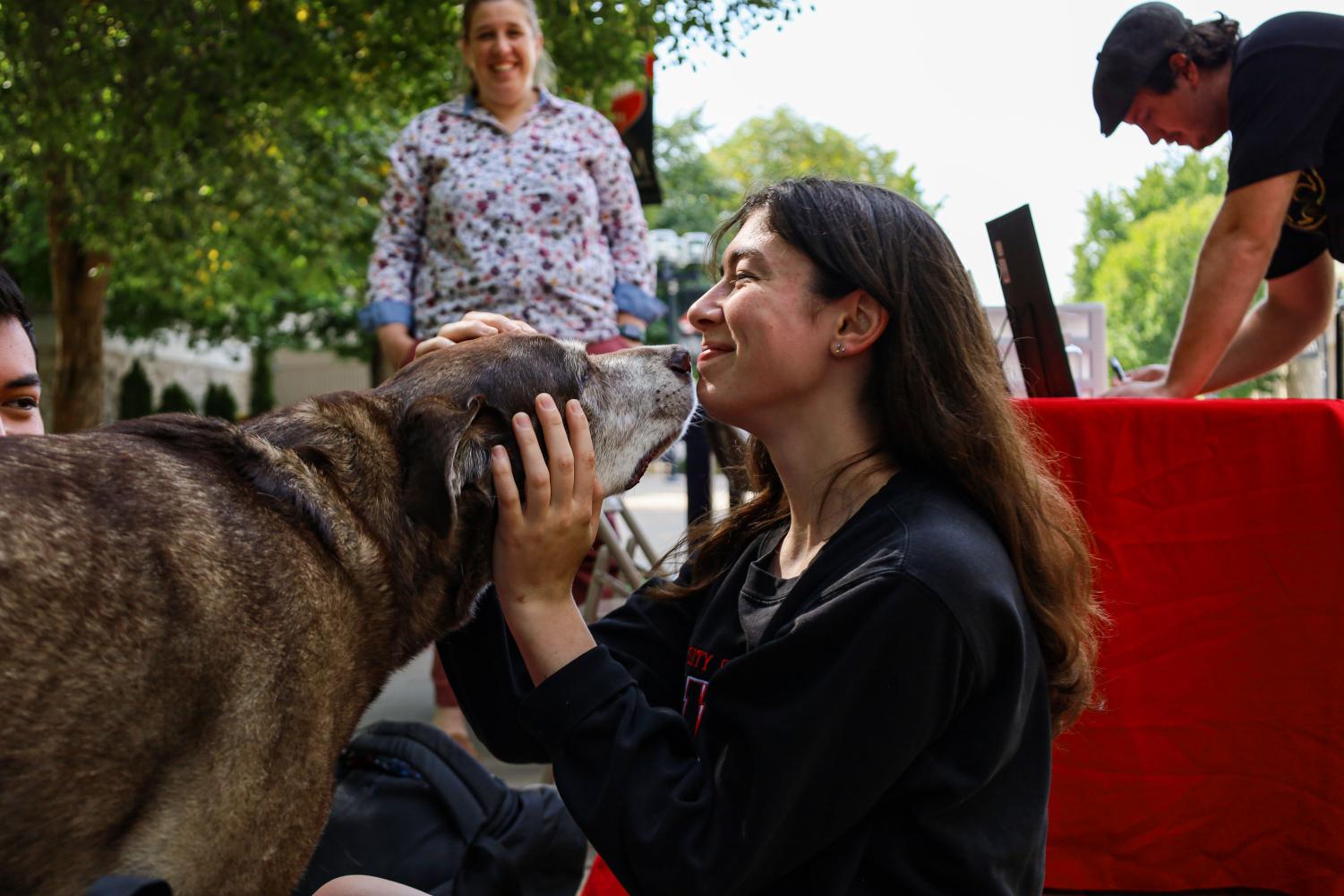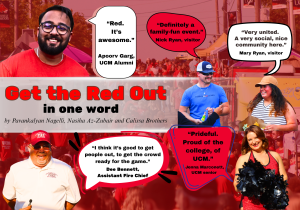These Dogs Work Magic
October 4, 2022
The University of Central Missouri’s Mo’s Activities Council (MAC) held Destress with Pets, an event from 10 a.m. to 2 p.m. on Sept. 15 outside of the Elliott Student Union where community members could interact with service animals and volunteer’s pets.
MAC invited Pet Partners, which is a group that employs service and therapy animals, mainly for children and adults experiencing hospitalization and summer camps for special needs children, but also for anyone needing animal therapy.
Psychology major Alexis Stryker said she was looking forward to the event and the significance of getting to interact with service dogs.
This is what got me through my last hour. I’ve been really stressed, I saw this, and I was looking forward to it,” Stryker said. “There are puppies, you can sit there and pet a dog and not have to worry. It’s just the best day.”
One Pet Partners volunteer, Jan Andrews, brought her dog Bubba to the event. “These dogs work magic,” Andrews said. “They’ve tried to do some research with them to show what they do, and you can take someone’s blood pressure and see it drop just from petting and having the dog around, but they haven’t been able to pinpoint it, and one of the researchers said it’s magic, so you just can’t measure magic.”
Andrews explained that Bubba showed up at her farm at 3 a.m. when he was an 8-week-old puppy. Ever since then, he has always had an aptitude for calming others. While puppies are often known for their rambunctious attitudes, Andrews mentioned how Bubba has been calm since he was a puppy. Service dogs often require this calmness as they meet individuals of all ages. Especially with children, there’s always a concern that they may be too rambunctious around dogs. Still, Bubba never minds, “he doesn’t care at all. Somehow, he understands that they aren’t always balanced, and it doesn’t bother him. A child could do anything to him, he loves kids. He doesn’t react,” said Andrews.
One student reiterated this feeling of calmness brought about by Bubba and the other service animals at the event. Kate Shanahan mentioned that the dogs were “definitely a stress reliever. I mean, I don’t think you realize that until you’re petting them and kind of forget about all the things that are on your agenda.”
For students like Shannahan and Stryker, the benefits of service dogs are immediately present. However, service dogs often serve more complex roles, whether as PTSD companions or to aid those with disabilities.
In the second half of the event, they had three new dogs, who were pets of the Student Activity Council. Many students believe they could immediately tell the difference in demeanor between service dogs and pet dogs. While the pet dogs were wonderful and cute, they were running around play-fighting and being rambunctious, which would be inappropriate for a dog in a hospital environment; however, Bubba stayed calm and sat right next to Andrews, continuing to comfort and aid students.
“Yeah, it’s just something about them [service animals]. They know who needs them the most in the room. So, when we go into a hospital, Bubba goes to the person that needs him the most” said Andrews.

